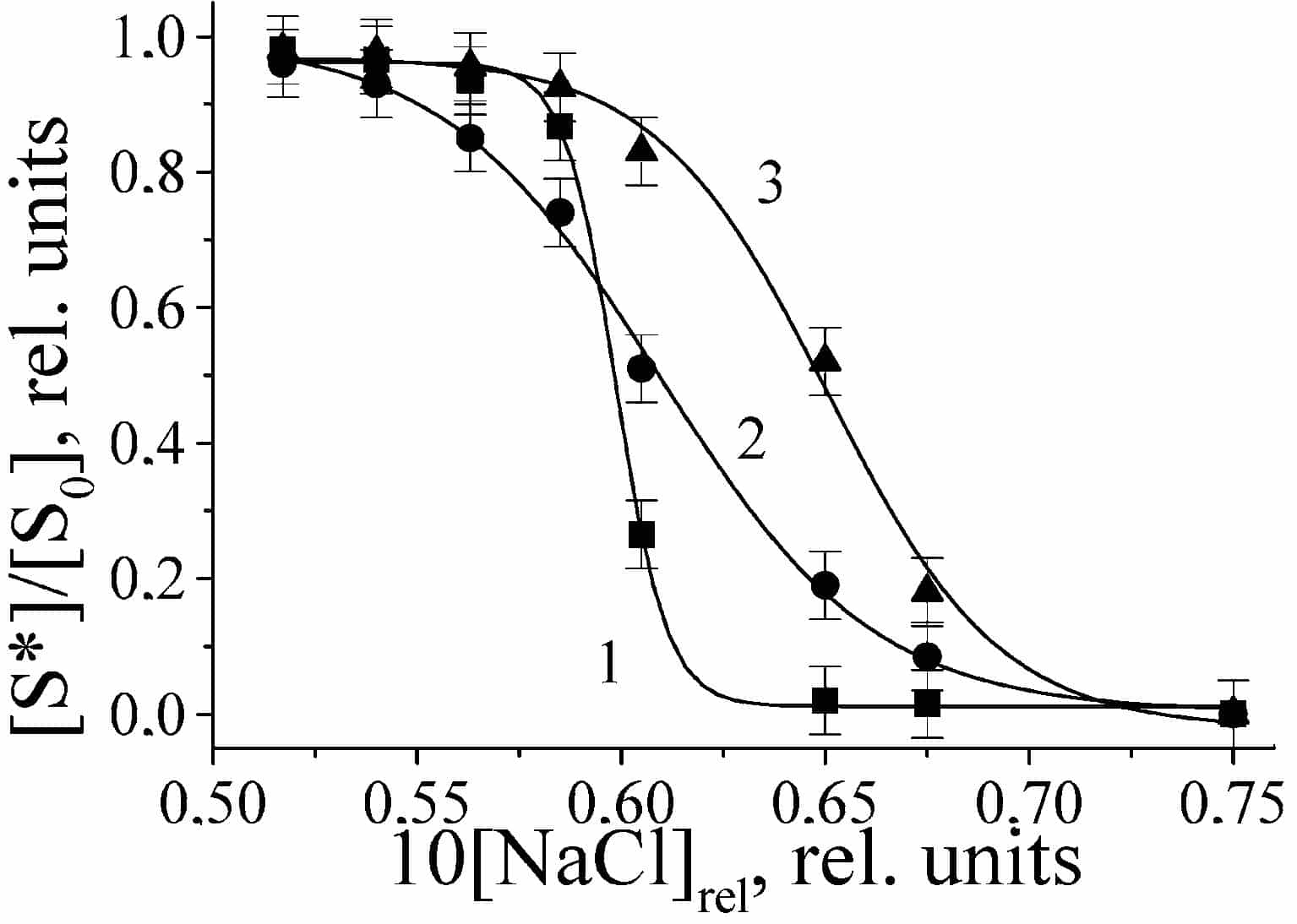As a rule oxidative stress is induced by reactive oxygen species and reactive nitrogen species. Peroxynitrous acid (HOONO) plays an important role in the development of cell oxidative stress. HOONO can modify the structures of lipids and proteins. The HOONO action targets are aromatic amino acids and cysteine (Radi, 1996). The fraction of such amino acids residues in transporters of small molecules and ions is higher than in other proteins, for example, cytoskeleton proteins. An aquaporin-1 cysteinyl is located in the vicinity of the water pore (De Groot et al. 2001). Therefore aquaporin is one of the first targets of HOONO action on cells, and osmotic properties are very sensitive to HOONO action. The purpose of this work is the analysis of erythrocyte osmotic property changes with HOONO action.
University of Manchester (2003) J Physiol 552P, P116
Communications: Water transport system characteristics of erythrocytes at oxidative stress
Maria N. Starodubtseva* and Sergey N. Cherenkevich†
* Gomel State Medical Institute, Lange str. 5, 246000 Gomel, Belarus and †Byelorussian State University, Scoryny ave. 4, 220050 Minsk, Belarus
View other abstracts by:
Figure 1. Relative concentration of haemolysed erythrocytes as a function of relative NaCl concentration in a solution. 1, control; 2, erythrocytes treated with 1 mM NaNO2 and H2O2; 3, erythrocytes treated with 10 mM NaNO2 and H2O2.
Figure 2. Haemolysis curves in Hill’s coordinates. 1, control (r = 6401 ± 903); 2, erythrocytes treated with 1 mM NaNO2 and H2O2 (r = 4015 ± 712); 3, erythrocytes treated with 10 mM NaNO2 and H2O2 (r = 3187 ± 977). y = [S*]/[S0]
Table 1. Changes of b50% (b50% is a parameter for a process inaqueous NaCl solution, b*50% is a parameter for a process insodium phosphate buffer), intensity of H2O2-inducedchemiluminescence of erythrocytes and haemoglobinoxidation during erythrocyte oxidative stress induced byHOONO.
Where applicable, experiments conform with Society ethical requirements.


![Figure 2. Haemolysis curves in Hill’s coordinates. 1, control (r = 6401 ± 903); 2, erythrocytes treated with 1 mM NaNO2 and H2O2 (r = 4015 ± 712); 3, erythrocytes treated with 10 mM NaNO2 and H2O2 (r = 3187 ± 977). y = [S*]/[S0]](https://static.physoc.org/app/uploads/2019/01/22203754/P116F2.jpg)
